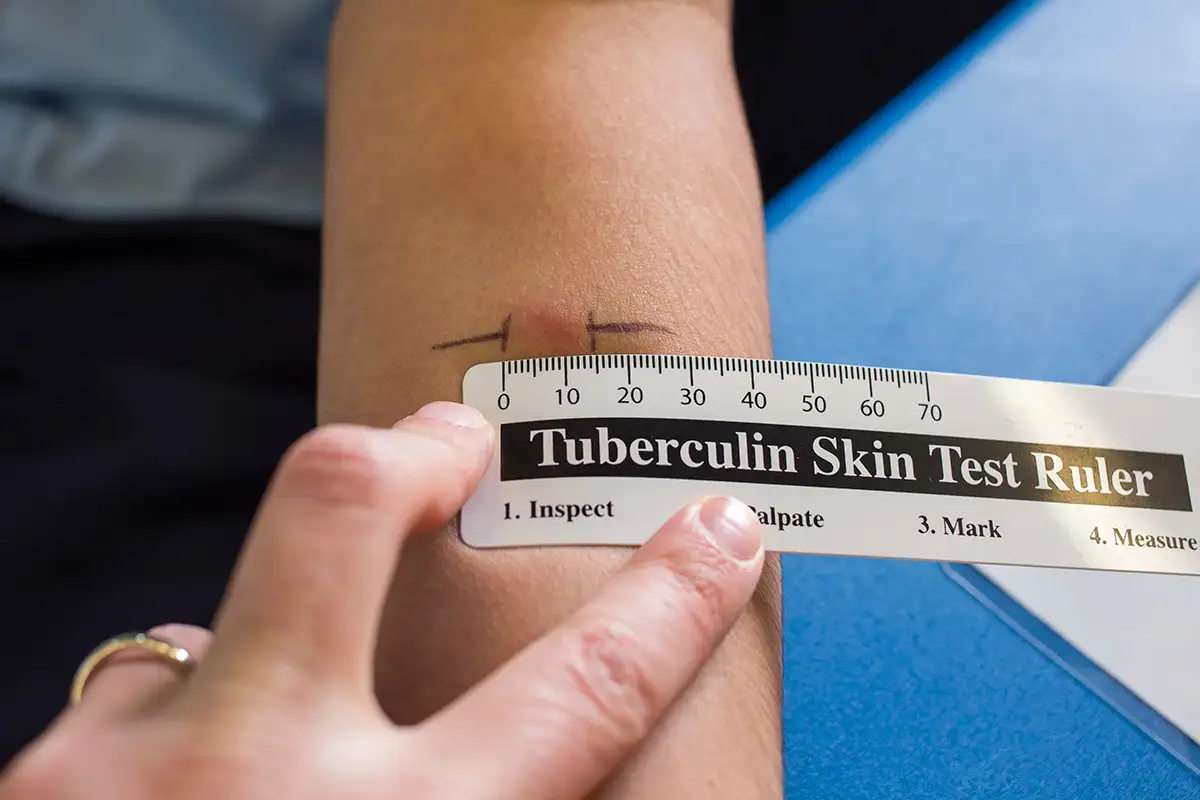Worlds Knowledge in Your Pocket.
"Share your knowledge. It is a way to achieve immortality." by Dalai Lama
Worlds Knowledge in Your Pocket.
"Share your knowledge. It is a way to achieve immortality." by Dalai Lama

If your primary care doctor isn’t able to answer all of your questions, ask if you need, or think you need, a TB test. If you don’t have a personal physician, here are some resources to get you started.
The TB skin test and the TB blood test are the two types of TB infection testing. A person’s health care provider should determine which tuberculosis test to use. The purpose of the test, availability of the test, and cost are all factors to consider while making a selection. In most situations, it is not advised to do both a TB skin test and a TB blood test on the same person.
The Mantoux tuberculin skin test, or TB skin test, is the most common type of tuberculosis testing. A health care provider conducts the procedure in two visits:
During the initial visit, the nurse pricks the patient’s forearm with a needle containing tuberculin, which is a harmless extract of the bacteria that cause tuberculosis.
The second visit occurs between 48 and 72 hours after the first one. The health care provider measures where on your arm you developed a raised bump or “bump” in response to the injected tuberculin. If the “bump” is larger than a certain size, it indicates you are infected with tuberculosis bacteria. The raised bump won’t be painful during this visit. Also, read about ABCs of Hepatitis
A TB test reading that is positive means that your body reacted to the injected tuberculin by creating white blood cells, which then multiplied and formed a large bump at that location on your arm. A positive result doesn’t mean you definitely have tuberculosis, but that you may need additional testing to see if it is TB or not.
If you have a positive TB skin test, your health care provider will definitely prescribe treatment. However, even if you have a negative result, it’s still possible to develop active tuberculosis later. Your health care provider may want to retest you in the future if:
A positive TB skin test is not an emergency, but it does require a follow-up consultation. A health care provider will retest you to see if the bump on your arm grew larger. This may indicate that you’re developing active tuberculosis. If you have a negative TB skin test result, this means that you’re not infected with tuberculosis bacteria.
A TB blood test also determines if you are infected with the bacteria that cause tuberculosis. This type of testing detects antibodies that your body creates in response to an infection. A positive TB blood test result means you may be developing active tuberculosis disease, but a negative result doesn’t mean you definitely don’t have it.
A patient’s blood will be taken and sent to a laboratory for analysis and results by a medical practitioner.
A person who receives a negative TB blood test result does not require treatment because they aren’t infected with tuberculosis bacteria. However, they should still see a health care provider immediately if they notice any symptoms.
A person who receives a positive TB blood test result needs treatment to stop the infection from developing into active tuberculosis disease. Your health care provider will prescribe medication based on whether you have latent tuberculosis or active tuberculosis disease. The treatment process for both of these conditions is similar.
Patients who receive a positive TB blood test result will usually see the health care provider again on days seven, 14, and 21 for additional testing.